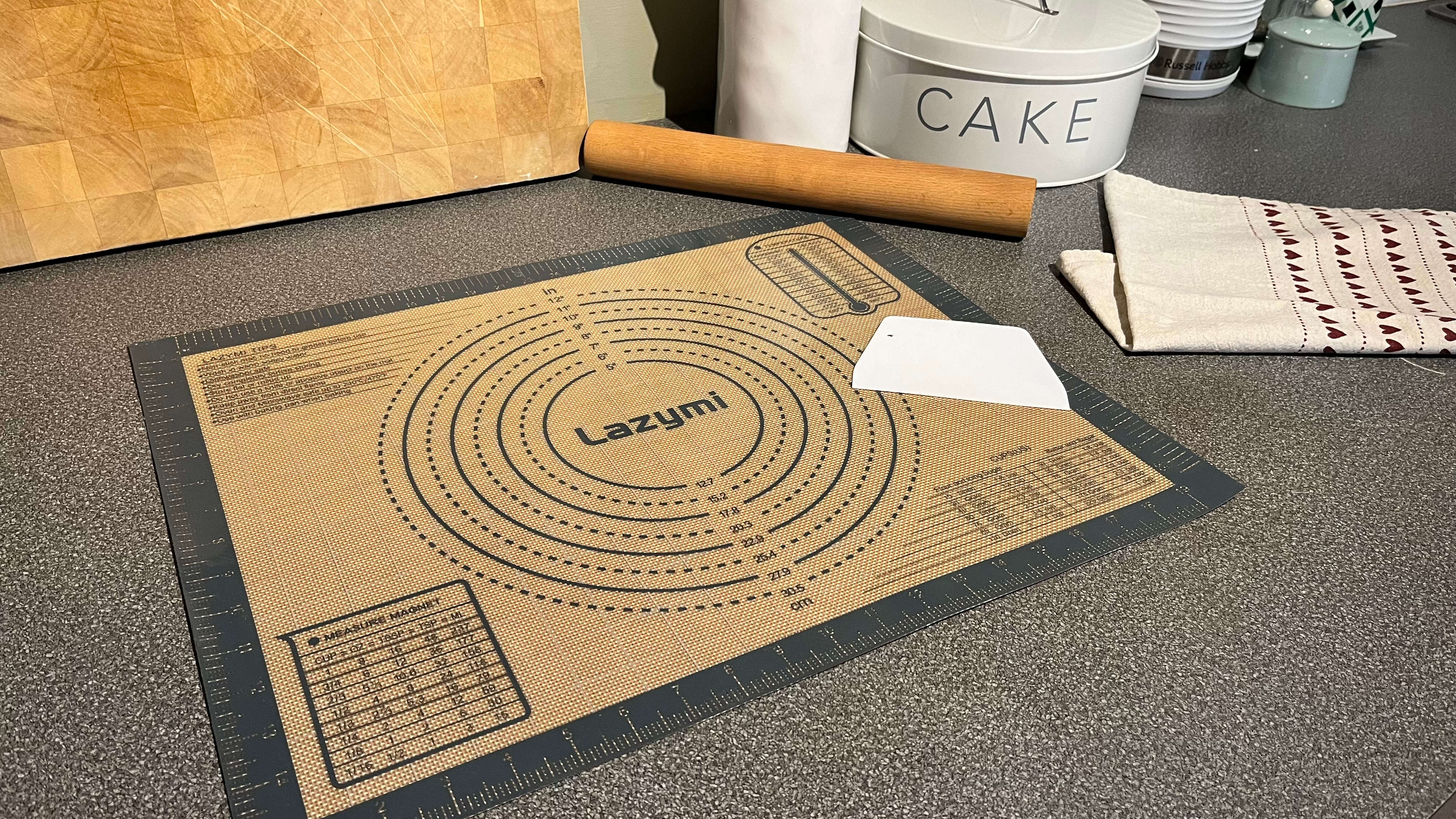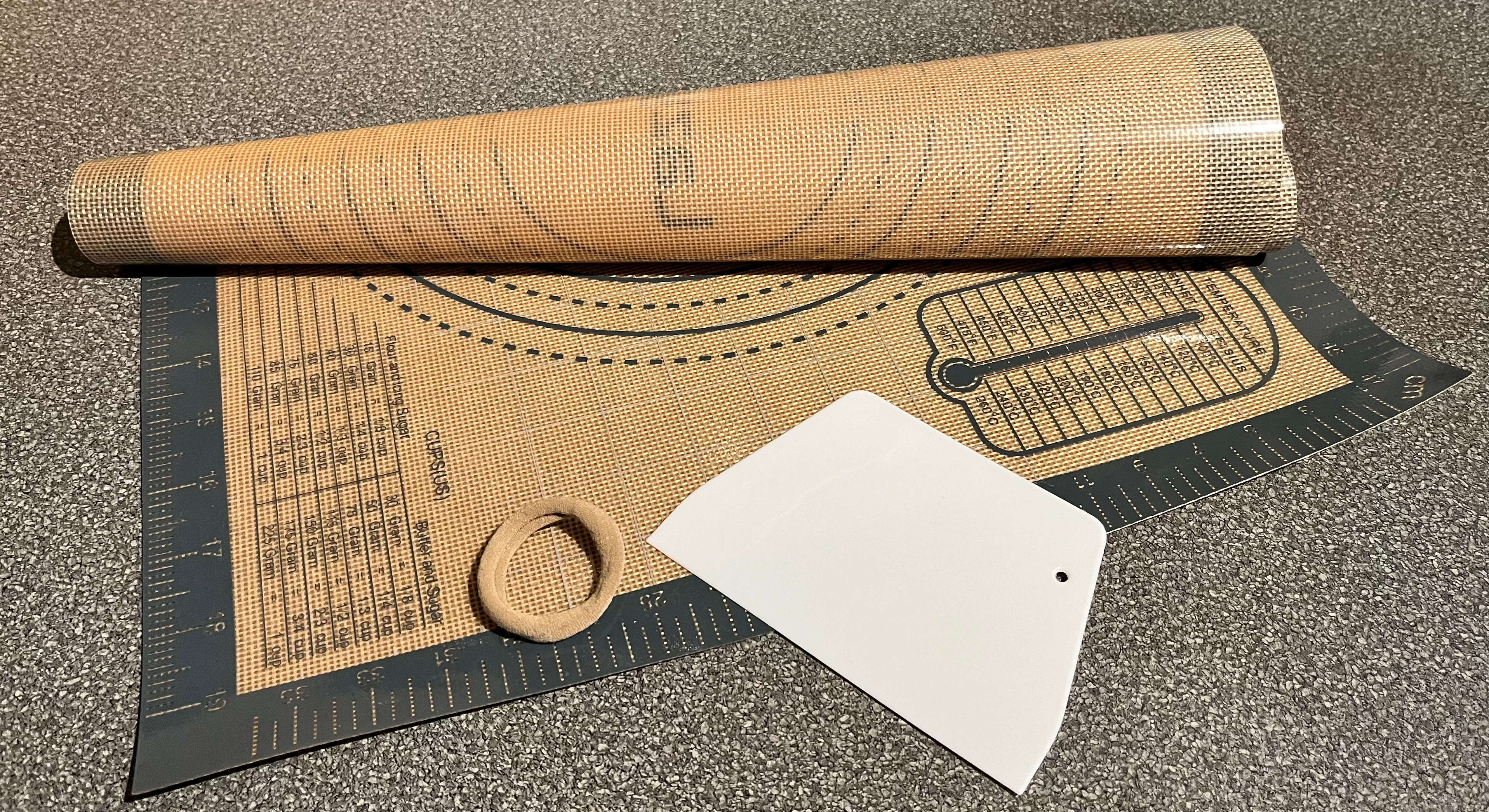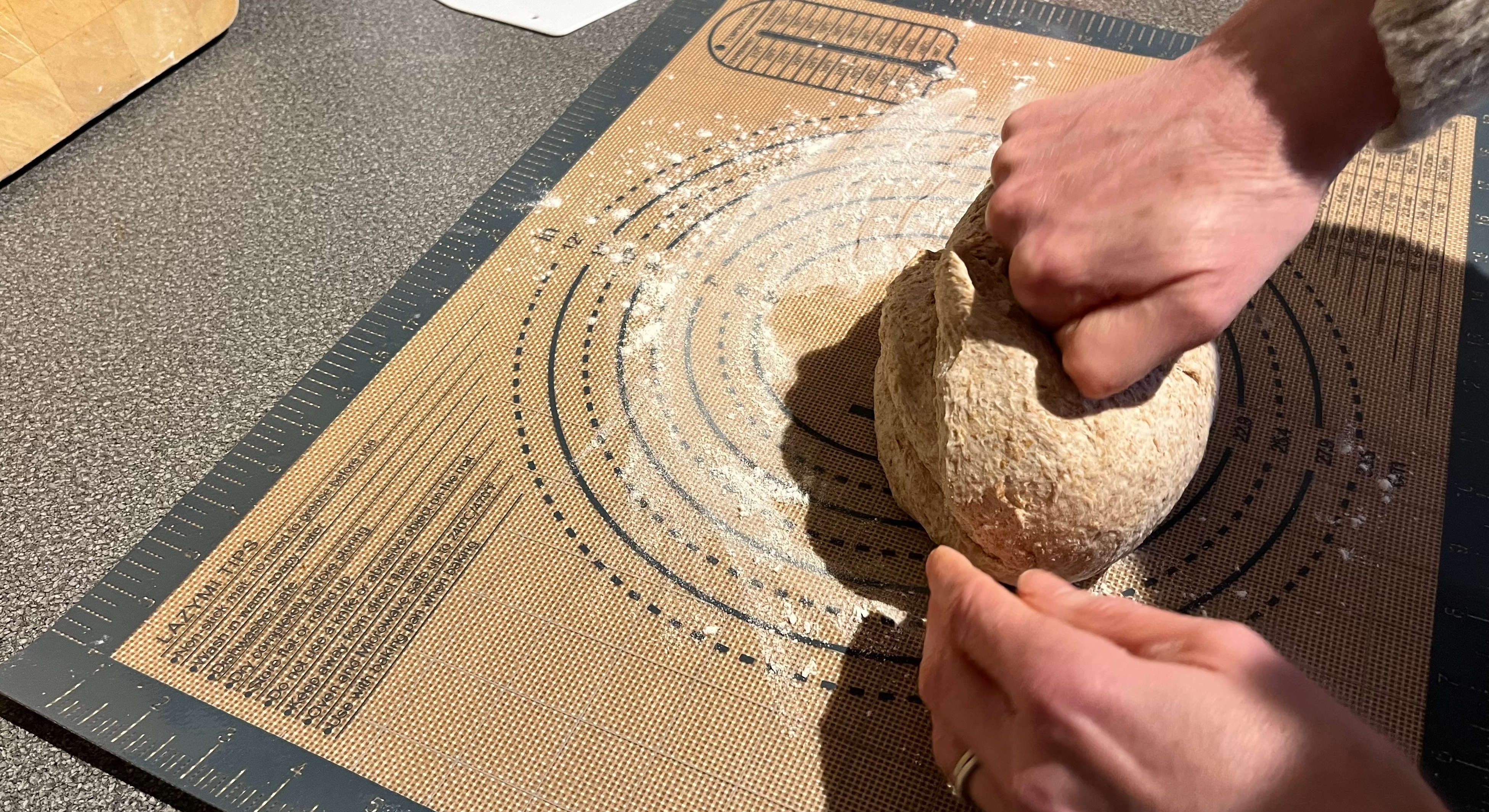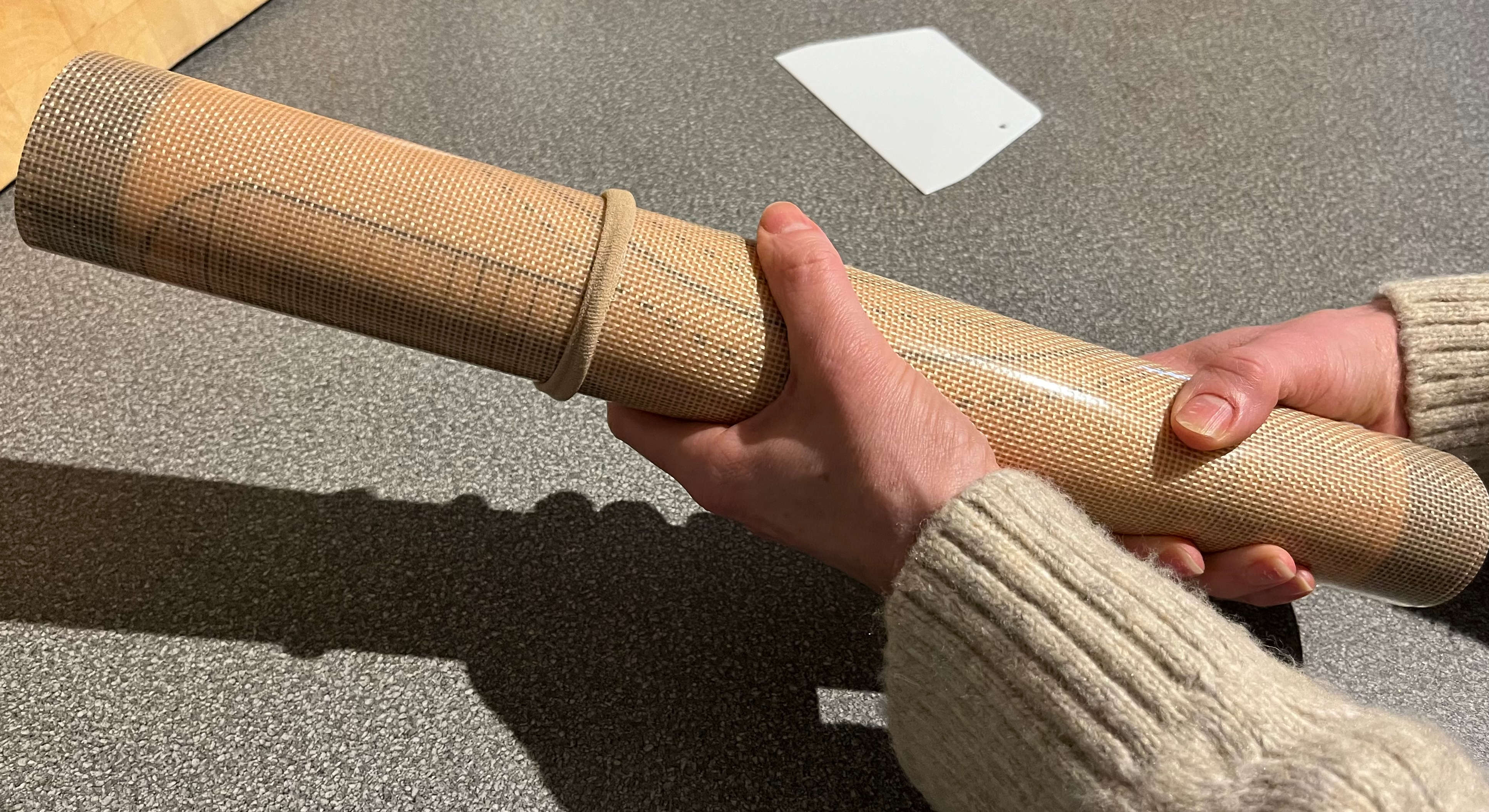I’ve tried this Lazymi silicone baking mat — and it’s a game changer in the kitchen
Rolling out pastry or dough will never be the same again

I’m a keen baker, and whenever I have any spare time you’ll find me in the kitchen, whizzing up a treat with my KitchenAid. So, it might be a surprise that I’ve never used a silicon baking mat before. In fact, I only discovered them over the holidays when one of my sons decided he wanted to have a go at making croissants! That in itself took me completely by surprise.
Rather than sticking with my trusted chopping board, which is my go-to surface for kneading dough and rolling pastry, he was keen to up his professional prowess with some proper kit. So, after presenting me with an online link to the Lazymi silicone baking mat (£9, Amazon.co.uk) it wasn’t long before it arrived in the mail and he could get baking.
If you’re considering buying one, here's what I learned when using the Lazymi silicone baking mat and a few U.S.-based alternatives you may want to consider. And as an aside, although I haven’t been brave enough to try croissants myself, my son’s first attempt was edible!
The guidelines won’t have you guessing

The silicone baking mat measures 40 x 60 cm or 16 x 20 inches. Both metric and imperial measurements are set out along the outer edges of the mat, which means you can banish the tape measure out of the kitchen, giving you one less thing to think about.
Apart from measuring pastry and dough when you're rolling it out so it fits the tin or pie dish, I found the measurement guides useful for checking the sizes of baking sheets and tins. Although I’m a frequent baker, I can never remember which cake tin measures what.
I always reach for my phone when baking to convert metric and imperial measurements. But with this baking mat my phone stays safe from floury and sticky hands. It includes equivalent measurements for:
- temperatures in Fahrenheit and Celsius
- cups and grams when measuring flour, icing sugar and butter
- cups and ounces
- tablespoons, teaspoons and millilitres
Silicone is non-slip and non-stick

The non-slip benefits of the silicone mat are that it sits flat on a countertop and doesn't move or bunch up as you work, meaning you can get on with the job in hand without readjusting your tools. It makes light work of kneading bread dough, rolling out pizzas, pastry and cookies, not to mention sticky fondant icing.
It made life far easier than using my current wooden board, which, despite its hefty weight, slips around on the countertop. I remember this also being a problem for my mom, she used a lightweight board and had to place a damp cloth underneath to keep it steady.
Dough and pastry are notoriously sticky, with certain breads like ciabatta much harder to work with than standard mixes, so the non-stick qualities are a real bonus. You really need all the help you can get when it comes to baking the perfect loaf of bread. I also found the extra dough scraper, which came with my mat, a real plus. It was easy to scrap away any remnants and cut through dough when it needed to be divided. It also helped when lifting and moving the pastry around on the mat, as I was able to insert it underneath. It’s a simple tool but incredibly handy and an invaluable asset for any breadmaker, novice or not.
The baking mat is easy to clean and store

If you need to remember how to care for the mat, it includes printed instructions on the top left. It can be washed in warm, soapy water, is dishwasher safe, and must be dried before storing.
The Lazymi Silicone baking mat is lightweight and weighs in at 190g. Although it mentions it can be stored rolled or flat, I’d recommend rolling it up, as it has a large surface area and might be awkward to store if not rolled. Simply roll it up and secure it with the band that’s included. I suggest rolling it around your rolling pin for an extra space-saving idea — keeping two tools frequently used together in one.
I found it really easy to clean, as the non-stick surface means you’re not battling with dried-on pastry or dough. And if you tend to pop everything in the dishwasher, it’s safe on the top rack.
It can handle extreme temperatures
Although the instructions say using the mat in an oven or microwave up to 470°F (240°C) is safe, there’s no chance that’s happening in my kitchen. The mat is simply too large to fit. However, while it’s good with high temperatures, it can also stand the cold and can be placed in a freezer. But, again, this could be a space issue.
Top for affordability and function

So many kitchen gadgets make our lives easier, but they come at a high price. And you often have to think about whether the price is worth the extra convenience. With this silicone baking mat, no decision time is needed. Having paid under £10 for my mat in the U.K., it’s been a real game-changer in the kitchen and even makes me smile when I’m using it. Why did I never have one before?
One caveat: Beware sharp objects
I have one word of warning. Due to the nature of the silicone material, avoid using sharp objects when using the mat. So, if you need to cut through dough or pastry, use an implement that won’t mark the mat. I found the accompanying dough scraper to be ideal when dividing dough.
Silicone baking mats: Alternative options
Although the silicone baking mat I use is a U.K.-specific model, there are similar products in the U.S. that deliver the same positives I experienced, but with better availability.
If you’re after a non-slip baking mat and aren’t concerned about the measurements, this Silpate Premium Non-Stick Silicone Baking Mat ($23, Amazon) is for you. Its compact size, designed to fit a 13 x 18in pan, makes it ideal for using in the oven as a replacement for baking parchment.
Dania & Dean offer a Silicone Baking Mat ($21, Walmart) with measuring guides to assist you when rolling out dough and pastry. The extra large mat measures 26 x 16in.
Another option is OXO’s Good Grips Silicone Pastry Mat ($24, Target) which features dough diameter outlines, unit conversions and diameter measurements.
More from Tom's Guide
Sign up to get the BEST of Tom's Guide direct to your inbox.
Get instant access to breaking news, the hottest reviews, great deals and helpful tips.

Camilla Sharman has worked in publishing and marketing for over 30 years and has covered a wide range of sectors within the business and consumer industries both as a feature, content, and freelance writer.
As a business journalist, Camilla has researched articles for many different sectors from the jewellery industry to finance and tech, charities, and the arts. Whatever she’s covered, she enjoys delving deep and learning the ins and out of different topics, then conveying her research within engaging content that informs the reader. In her spare time, when she’s not in her kitchen experimenting with a new recipe, you’ll find her keeping fit at the gym. In the pool, stretching at a yoga class, or on a spin bike, exercise is her escape time. She also loves the great outdoors and if she’s not pottering about in her garden, she’ll be jumping on her bike for a gentle cycle ride.
